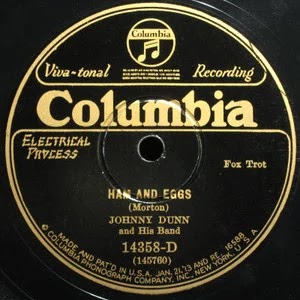Maxim Saury (born February 27, 1928, Enghien-les-Bains -
November 15, 2012, Boulogne-Billancourt) was a French jazz clarinetist,
bandleader and arranger, he is one of the symbols of the " revival "
(the "resurrection") of New Orleans jazz in Saint-Germain-des-Prés , for
the 1950s and 1960s .
 Though Saury's father played violin professionally, he did
not take to the instrument as a young child, and only began playing when he was
twelve years old. He switched to clarinet because he admired the playing of
Hubert Rostaing. Shortly after World War II he began playing with Christian
Azzi and Claude Bolling, and briefly led a trio in 1949.
Though Saury's father played violin professionally, he did
not take to the instrument as a young child, and only began playing when he was
twelve years old. He switched to clarinet because he admired the playing of
Hubert Rostaing. Shortly after World War II he began playing with Christian
Azzi and Claude Bolling, and briefly led a trio in 1949.
In the 1950s he founded his own large ensemble called the
New Orleans Sound; this band included Jean-Claude Naude and went on several
tours worldwide. Between 1955 and 1968, he played almost tirelessly at the
Caveau de la Huchette , in Paris and participated in all major French jazz
festivals (including Cannes , Antibes , Nice or Juan-les-Pins ).
Here's "September Song" from above E.P.
Since the late 60's, as a representative of the French
traditional jazz scene, he has performed regularly in France and throughout the
world. He played with Barney Bigard in
the US in the late 1960s and returned to play in the US twice in the 1970s.
Once being with Louis Armstrong on his 70th anniversary concert.
As a representative figure in French traditional jazz, he
was frequently invited to play music, or the role of a musician, in film and
television, including in Bonjour Tristesse, Les Tricheurs, Mon oncle, and Adieu
Philippine.
 |
| Maxim with Louis Armstrong 1970 |
In 2007, he was one of the few performers selected for the
compilation in four volumes The 100 Greatest Successes of
Saint-Germain-des-Pres , alongside Yves Montand , Boris Vian , Juliette Greco ,
The Brothers Jacques , Catherine Sauvage , Sidney Bechet , Marcel Mouloudji and
Stéphane Grappelli .
 In 2008, Maxim Saury remarried at the age of 80. And, in
2009, he still performed in various galas and concerts, celebrating his "career
of sixty years.”
In 2008, Maxim Saury remarried at the age of 80. And, in
2009, he still performed in various galas and concerts, celebrating his "career
of sixty years.”
He died at the age of eighty-four on November 15, 2012 at
Ambroise-Paré Hospital in Boulogne-Billancourt, following heart problems.
Maxim Saury’s daughter is the jazz drummer Julie Saury .

















































